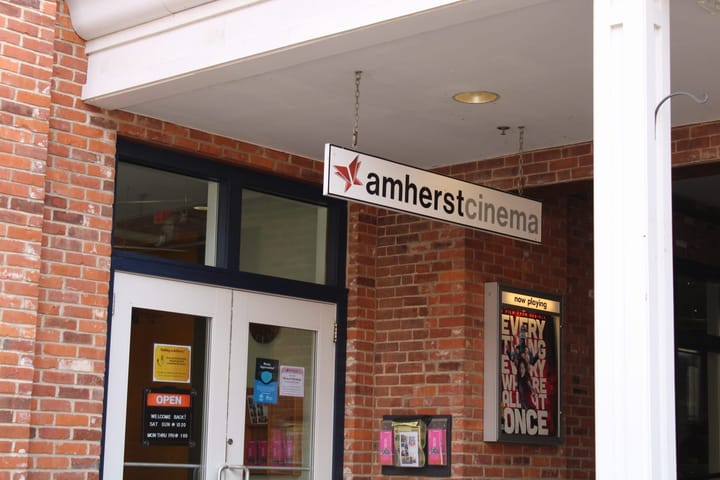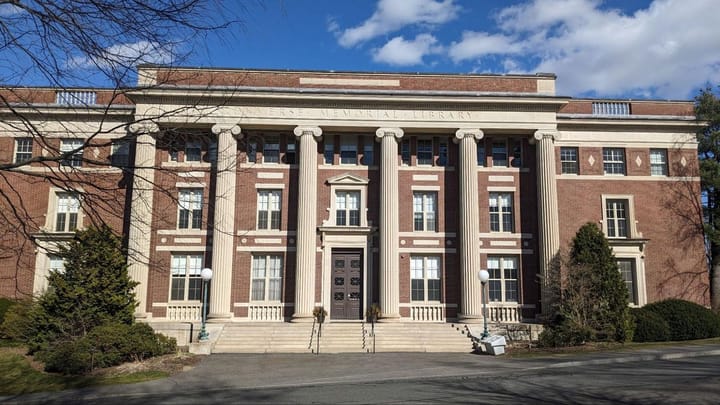Academic Dismissal Rates Reveal Persistent Racial, Socioeconomic Disparities and Institutional Bias
Dismissal from the college for either academic or disciplinary reasons is a roadblock — it slows down the college experience. At Amherst College, Black, Latinx, first-generation and low-income students experience that roadblock the most.
On average, the rates of academic dismissal among Black, Latinx and first-generation students at the college are all, respectively, more than double the average of all students. And they are over four times the rate of academic dismissal among white students, legacy students and athletes.
The Office of Institutional Research at Amherst College recently generated a report that organizes data from the 2010-2011 school year through the 2019-2020 school year. In particular, it catalogs the various types of college leaves and what percentage of students take those leaves based on demographic. The data set is available to the public and can be accessed here.
Involuntary Dismissals

The data shows that from the fall 2010 semester to the spring 2020 semester, rates of academic dismissal stood at 2.1 percent for Black students, 2.2 percent for Latinx students, 2.4 percent for first-generation students and 1.5 percent for low-income students. For context, the average rate of academic dismissal among all students was 1.0 percent. Meanwhile, the rates of academic dismissal of white students and legacy students were both 0.6 and the rate for athletes was 0.5 percent.
Disciplinary dismissal is another form of involuntary leave, enforced when a student poses a physical harm to themselves or others, fails to make a timely payment of a semester’s bill, fails to provide immunization records or fails to register for classes.
Disciplinary dismissal is used less frequently than academic dismissal. Even so, disciplinary dismissal sees disproportionately higher rates among the same groups as above. From 2010 to 2020, the rates of disciplinary dismissal among Asian American, Black, Latinx and first-generation students were all 0.2 percent. The rates for white students, athletes and low-income students were all 0.1 percent. Not a single legacy student has been asked to leave the school for disciplinary reasons over that 10-year period. Even though these numbers are smaller than those of academic dismissal (because disciplinary dismissal is invoked less often), the trend persists: communities of color and first-generation students face involuntary leave more than their white, legacy and athlete counterparts.
Academic dismissal is a two-semester long leave where students take a pause from working toward their Amherst College degree due to an inability to maintain an adequate academic standing. At Amherst, a student might face academic dismissal for a severely low academic standing (i.e. failing some classes while barely passing the others) as well as not fulfilling standards of academic probation.
According to a joint statement from the Class Deans, academic dismissal is a “last resort” and exists “to support students in regaining a solid academic footing with the goal of helping each student complete all degree requirements.” Students who are put on academic leave are expected to take at least two Registrar-approved liberal arts courses at another accredited college and earn a grade of at least a C.
A student could take a voluntary leave from the college for non-academic or disciplinary reasons as well. They could pause their Amherst education for medical reasons or they might decide to transfer or withdraw from the college completely. Regardless of the reason, taking a leave slows down the course of one’s Amherst College career and so it is worth examining why these leaves are distributed among demographics the way that they are. That is, why do certain demographics take fewer pauses in their college careers?
Why do certain Amherst students get their degrees faster?
Eliza Brewer ’22, the president of the QuestBridge Low-Income Community said, “Getting books is one big thing. Even though first-year students get a stipend, after that you don’t really get any sort of stipend.” She said that there is misinformation among some faculty members who don’t realize that non-first-year students don’t receive a textbook stipend and then will unknowingly put books on the syllabus out of some students’ affordability range.
Brewer also noted that first-generation, low-income (FLI) students often have to work multiple jobs while keeping up with their studies. When she was working three jobs during her first year at Amherst, she remembers, “that really took a toll on my academics.”
Evidently, to explain the patterns we see in the data for academic dismissal rates, it is easy enough to look to student stories about inequities in the Amherst academic experience.
The disparity in academic dismissal rates should not be mistaken for the root of the problem of academic inequity at Amherst — rather, it is a symptom. The class deans noted that though academic dismissal is not an ideal situation for any student, those who do return “often express feeling more grounded and focused and thrive academically moving forward.”
Still, the class deans acknowledge that there is a difference in rates of academic dismissal among certain groups and report to be “committed to aggressively addressing these concerns” and want to improve “equity of outcomes.”
According to Director of Institutional Research Jesse Barba, the college’s efforts to set students up for academic success have improved academic accessibility among first years as proven by grade performance data. Still, initiatives that specifically target the unequitable learning experiences among different demographics are not as readily reported.
Barba recognized, “The work is not done, however, and the provost has created an ad hoc committee on student learning to provide an ongoing examination of the College’s data.”
The disparity in academic dismissal rates should not be mistaken for the root of the problem of academic inequity at Amherst — rather, it is a symptom. The class deans noted that though academic dismissal is not an ideal situation for any student, those who do return “often express feeling more grounded and focused and thrive academically moving forward.”
Still, the class deans acknowledge that there is a difference in rates of academic dismissal among certain groups and report to be “committed to aggressively addressing these concerns” and want to improve “equity of outcomes.”
According to Director of Institutional Research Jesse Barba, the college’s efforts to set students up for academic success have improved academic accessibility among first years as proven by grade performance data. Still, initiatives that specifically target the unequitable learning experiences among different demographics are not as readily reported.
Barba recognized, “The work is not done, however, and the provost has created an ad hoc committee on student learning to provide an ongoing examination of the College’s data.”
The factors that compose a student’s academic experience, however, are not contained within the walls of a classroom. The stories catalogued on @blackamherstspeaks recount the Amherst experience of Black students from interactions with professors to hostility on sports teams to harassment in general social settings. As AAS President Jeremy Thomas ’21 puts it, “Ask Black students in underrepresented majors why they left and you find horror after horror, as evinced by Black Amherst Speaks.”
“Ask Black students in underrepresented majors why they left and you find horror after horror, as evinced by Black Amherst Speaks.”
Jeremy Thomas ’21
Looking for root problems then is no straightforward task — not when the root cause is so deeply seated in an institution’s systems that stories of marginalization on campus are nearly universal for students of color and FLI students. Still, the task is necessary. Thomas notes, “Unless the College is comfortable with the claim that Black students are academically inferior to all others at the College, it is a result of policies and practices that, intentionally or not, disproportionately and increasingly result in Black students being dismissed from Amherst. That should be an untenable stance, but here we are.”
*Disclaimer from the QuestBridge Organization: This statement was made by Eliza Brewer, president of the Amherst College Questbridge Scholars Network (QSN) Chapter in support of the Amherst College QSN Chapter community. The content on this platform does not represent the policies or positions of the QuestBridge organization.





Comments ()